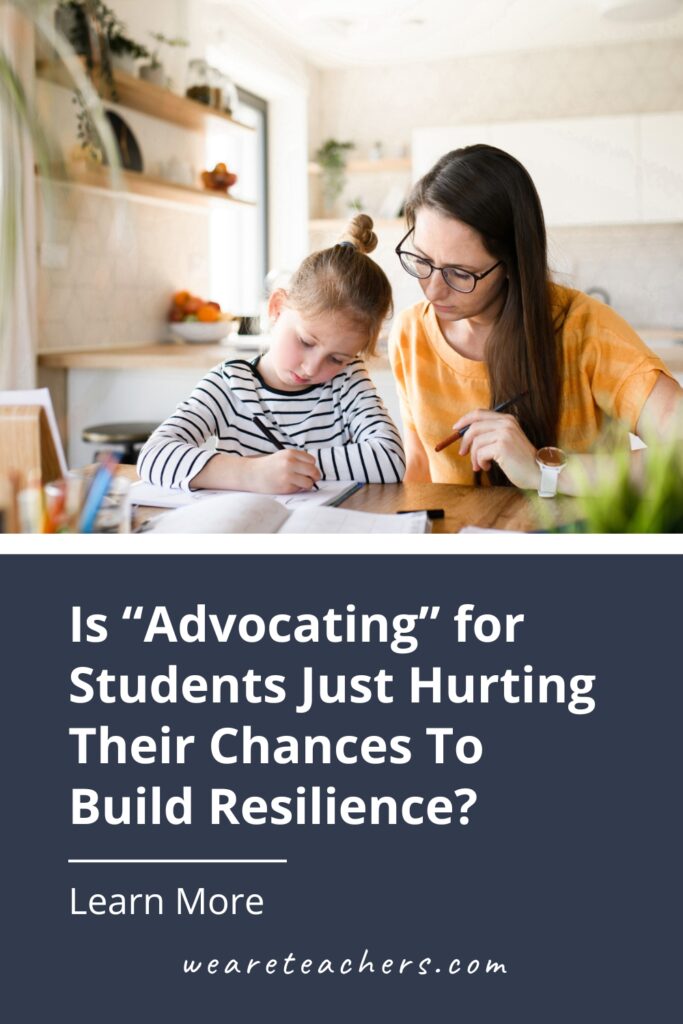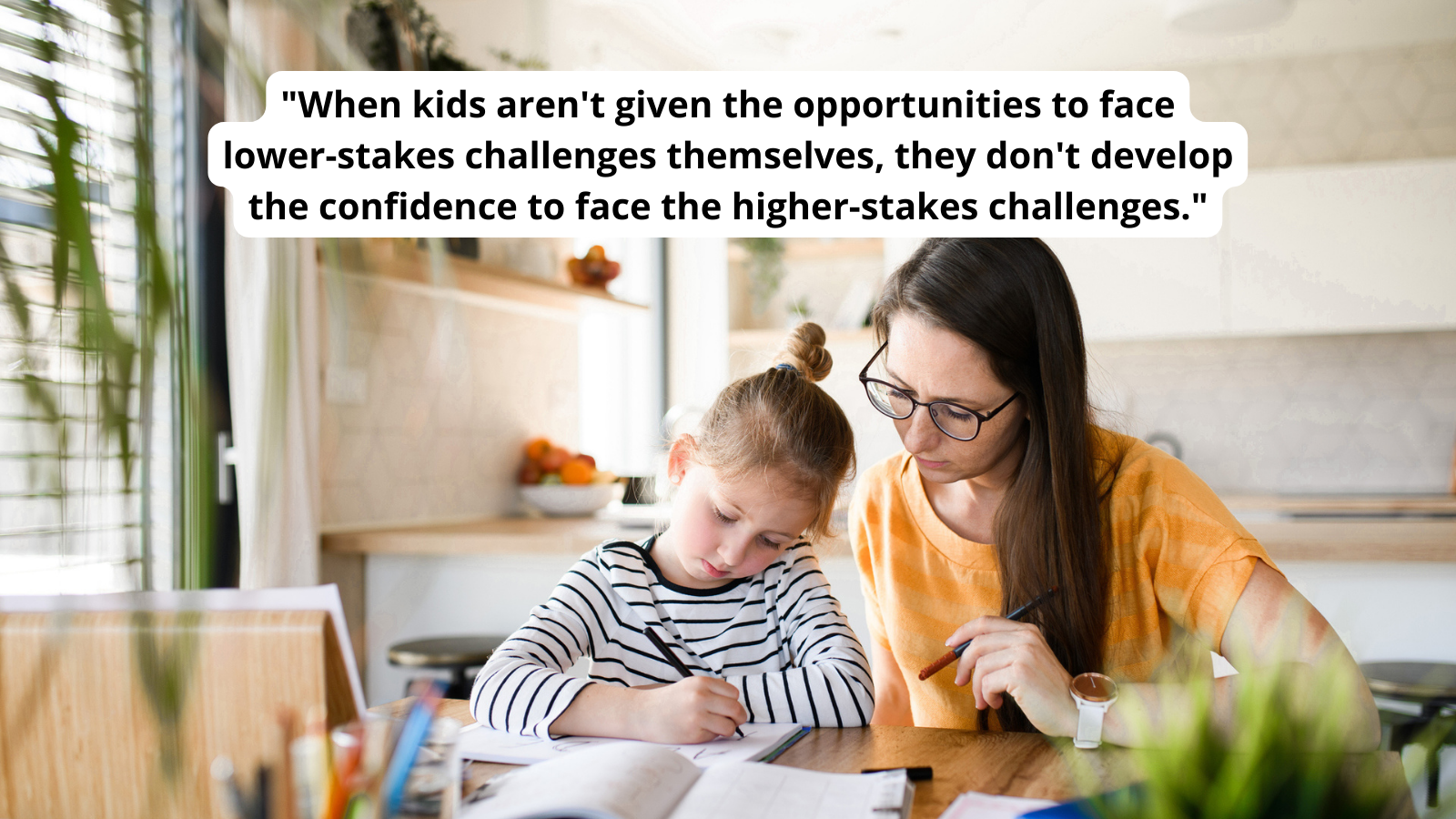Before the start of the last school year, I was working in my classroom on seventh grade orientation day. Following their tour, one of my new students and his mom came into my room. The student introduced himself and his mom, and he shared about his participation in baseball and Boy Scouts and also that he was dyslexic. He then explained that because of this, he learned best with hands-on activities and audio versions of texts.
You could have knocked me over with a feather. Yes, I was impressed at this student’s polite yet relaxed demeanor in meeting a new adult. But what really shocked me was how articulately he spoke about his learning needs and advocated for himself proactively. It was the first time in my career I’d met a student who was so aware of himself. And while his mom joined the conversation, she let him take the lead and speak for himself. Clearly, this was a student who had faced challenges, been given the opportunity to build resilience, and learned how to advocate for himself.
The resiliency problem
Unfortunately, this level of student resilience is less common than many of us would hope. A 2015 study published in Psychology Today notes that “students are increasingly seeking help for, and are apparently having emotional crises over, problems of everyday life.”
Studies show us that students with over-involved parents have less self-control, are more likely to experience school burnout, and are more likely to struggle with relationships and anxiety disorders. More parents are contacting college professors to complain about their child’s grades.
With parents more involved than ever in their child’s education, why are these crises happening? Shouldn’t parental involvement and support lead to stronger, more capable kids?
It’s clear to many experts: When kids aren’t given the opportunities to face lower-stakes challenges themselves, they don’t develop the skills to manage the higher-stakes challenges. Here’s how Dr. Gail Saltz of the Child Mind Institute puts it:
Eventually an overprotected child will grow into an adult and face adult problems: “I’m having trouble getting a job.” “I didn’t get accepted to that program I wanted.” “That guy didn’t ask me to marry him.” Whatever it is, if you have no tools in your armory for coping with disappointment, for struggling and persevering, then you’re in trouble. I think that kind of lack of resilience—the feeling of being overwhelmed as an adult and unable to cope—often ends in depression.
So how do we support students in becoming strong, confident learners? How do we help develop young people who are able to persevere through challenges and seek out the support they need to do so? The answer lies at the intersection of two education buzzwords: advocacy and resilience.
Advocacy, meet resilience
Before we can really dive into either topic, we have to understand what they are. The Missouri Foundation for Health defines advocacy as “any action that speaks in favor of, recommends, argues for a cause, supports or defends, or pleads on behalf of others.” Oxford Languages defines resilience as “the capacity to withstand or to recover quickly from difficulties; toughness.”
At first glance, these definitions seem like a natural pairing. It only seems logical that advocating on a student’s behalf would help them to recover from setbacks. But when we look more closely, it sparks an interesting question. The act of advocating surely builds important skills within an individual. But if students aren’t getting the chance to face challenges themselves, will they reap the benefits of developing these skills?
The self-advocacy solution
The concern, of course, is that students aren’t developing skills to advocate for themselves. Thus, the intersection between advocacy and resilience must shift in a way that places more ownership on the student. Enter self-advocacy.
Teaching students how to be their own advocate will build a sense of self-awareness, independence, ownership of success, and, of course, resilience. But for many adults, it is far easier and more efficient to do the work of advocacy themselves.
We need to guide students and parents toward the value of self-advocacy. After all, an educator’s job is far more than imparting knowledge of math or literacy. At its core, our role is to develop the next generation of leaders. And good leaders are strong advocates for themselves and others. With this perspective, teaching advocacy—something we can embed in our existing classroom procedures—becomes part of our job description.
How to build self-advocacy skills
Here are some recommendations for building self-advocacy in students.
- Offer choice. In an interview on the “College Parent Central” podcast episode 74, educational planner Judith Bass explains the importance of choice for learners. “Choice shows students that their voice matters,” Bass explains. Simple choices educators could embed in their classrooms could include options for which text to read, different formats for creating a final product, or choosing the order to complete non sequential tasks.
- Communicate directly with the student. In the same episode mentioned above, Bass describes the all too common situation of parents communicating with other adults for their child. She cites the example of parents placing food orders, speaking to salespeople, and otherwise answering for their children. While it is quicker and easier in the moment, it strips the child of the chance to build their skills of communicating their wants and needs. As classroom teachers, we can reduce this by including students in parent conversations. Examples include adding them to email communication, inviting them into the room during a phone call home, or including them during in-person meetings.
- Include students with IEP/504 plans in their meetings. In episode 10 of the “Go Dyslexia” podcast, dyslexia expert and advocate Lauren Mcclenney-Rosenstein shares the experience of sitting in IEP meetings with students who could not even name their diagnosis. Without this vital knowledge, how could we possibly expect students to understand why some tasks are more challenging for them and be able to explain the support they need to accomplish them? I’m so grateful my students are often well versed in the nuances of their accommodations. They will often ask for headphones to listen to audiobooks as opposed to reading print, or ask to use voice-to-text to complete longer written assignments. Clearly, their awareness of their diagnosis serves to empower them as independent learners. After all, knowledge is power.
- Create time for productive struggle. Imagine you’re a moderately skilled tennis player and want to improve. Which opponent would you choose to play: someone whose skills are far inferior to yours or someone a bit better than you? As educators, we have to strike a balance with the tasks that promote productive struggle. We need to push students just beyond their current abilities without being so advanced that they cause frustration or shut down. When students are faced with challenges that they must genuinely work to overcome, they build confidence, competency, and resilience.
- Teach the neuroscience behind a growth mindset. Since Carol Dweck’s Mindset: The New Psychology of Success hit shelves in 2006, “growth mindset” has become a fixture in schools. All too often, students are encouraged to apply the principles of a growth mindset without an understanding of what is actually taking place in their brains. For some students, understanding the “why” can make all the difference in their willingness to shift their thinking. Secondary students especially may need more convincing that this is the real deal as opposed to feel-good fluff. The following resources provide science-backed explanations of growth mindset appropriate for any grade level.
Elementary: Check out this list of growth mindset read-aloud books.
Secondary: Show this Khan Academy video that depicts the neuroscience of a growth mindset in an accurate yet engaging way. Additionally, check out more growth mindset teaching strategies in The Growth Mindset Coach, a book designed specifically for classroom instruction.
Takeaways
Luckily, science is on our students’ side. Research shows us that most students can successfully advocate for themselves when they are appropriately supported. Our job as educators is to provide those opportunities rather than remove them through our good intentions to help. By including students in communication that enables them to learn their unique learning needs and providing them with opportunities to strengthen the connections in their brain, we can develop the next generation of self-advocates. We just have to be willing to step to the side, guide parents in the value of this process, and let students show us what they can do.
What are your thoughts on advocacy vs. resilience? Let us know in the comments!
Plus, for more articles like this, be sure to subscribe to our newsletters.

WeAreTeachers

